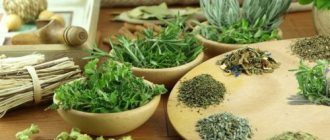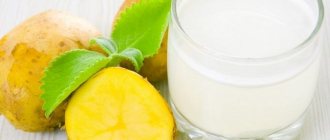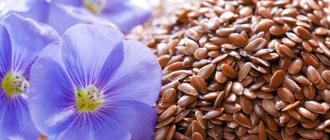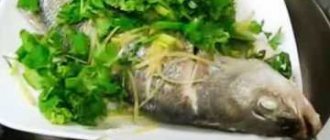Potato juice for pancreatitis is recommended to drink to reduce the severity of symptoms of the disease. During the period of remission, it helps reduce the risk of exacerbations and create conditions for the restoration of the affected gland.
In order for the treatment of pancreatitis using phytotherapeutic methods to be most effective, it is recommended to combine it with drug therapy. It is not enough to reduce the severity of inflammation; it is also necessary to normalize the function of the pancreas, and this can only be done with the help of pharmaceuticals.
In addition, you should not resort to home treatment methods alone in case of exacerbation of the pathology. In such cases, you need to seek help from a doctor so that he can make a diagnosis and prescribe the correct treatment.
What are the benefits of potato juice?
The healing properties of the vegetable drink have been known to people for a long time. The product contains 14 amino acids, 30 useful microelements, and has a high energy value. Vital for the human body are vitamins B, C, PP, E, magnesium, phosphorus, folic acid, calcium, chlorine, sodium, iron. The product, which is familiar to everyone, contains easily digestible carbohydrates that cannot be produced industrially.
Medicinal properties of potato juice:
- has a beneficial effect on the pancreas;
- reduces blood pressure;
- reduces sugar levels;
- relieves headaches;
- treats ulcers, gastritis, relieves inflammation;
- has a diuretic effect;
- used to treat fungal skin diseases;
- relieves heartburn;
- stimulates intestinal function;
- alleviates the condition of intoxication.
The juice is also good for healthy people. It is recommended to drink it to prevent ulcers, especially for those who are at risk. For pregnant women, the product helps get rid of swelling and heartburn. The product is actively used in cosmetology: masks are made from the vegetable that effectively get rid of acne and even out and whiten the complexion. The drink relieves skin irritations and masks bags under the eyes.
Treatment with potato juice
If pancreatitis and cholecystitis are diagnosed, the patient must adhere to a special diet and drink vegetable drinks. Together with drug therapy, it is recommended to take a potato drink, which has a beneficial effect on the entire digestive system. For pancreatitis, the product significantly facilitates the functioning of the gastric tract, partially slowing down the production of acid and enzymes. In addition, it envelops the walls, eliminates pain, spasms, and promotes the removal of fluid from the body.
As a rule, cholecystitis occurs as a complication of pancreatitis and occurs in acute or chronic form. Patients experience paroxysmal pain, which potato juice helps eliminate. In addition, the drink has a noticeable anti-inflammatory and wound healing effect. In order for potato juice to have maximum benefits for the stomach, you need to prepare it in compliance with the rules and drink it according to a certain scheme.
How to drink potato juice
The most important rule is to consume within 10 minutes after preparation. If raw juice sits too long, it will lose its qualities, acquire an unpleasant color, a nasty taste, and lose its beneficial properties. You need to start the course with a minimum amount to get used to it and avoid nausea. The recommended daily dose is at least 150 ml a few hours before meals. You need to drink potato extract for 2 weeks, then rest for 7 days and repeat the 2-week course. Some recommendations:
- The taste of the drink is unpleasant, but it is undesirable to add salt and other flavor enhancers to it. The exception is carrot juice.
- It is worth treating in early autumn or early summer - at this time potatoes are most beneficial for the body, because harmful substances have not yet had time to accumulate.
- During the course of treatment, you should change your diet - give up animal products, switch to plant foods, which go better with raw potato juice.
- To treat pancreatitis and cholecystitis, it is better to use juice squeezed from varieties with pinkish-red tubers.
Contraindications
Treatment of pancreatitis and cholecystitis with raw potato juice is prohibited during exacerbation of diseases. The fact is that the product contains a large amount of ascorbic acid, which can harm the digestive system. In addition, the potato drink causes loose stools, while diarrhea is already present in acute pancreatitis. If the patient has a chronic form, it is recommended to drink the product during the period of remission. Contraindications for use:
- diabetes;
- is obese;
- low acidity;
- have allergies.
Medicinal qualities
Today the vegetable is grown in many countries. Its tubers contain fructose, sucrose, magnesium, potassium, phosphorus, iron and other useful substances. Research by scientists suggests that potato juice is very effective for the stomach. The drink can be used for stomach and duodenal ulcers. Drinking juice as a medicine is beneficial. It can significantly reduce the acidity of gastric juice and lower the pain threshold for ulcers.
Through experiments, various unique qualities of the drink were discovered. It is a tonic, healing, diuretic, anti-inflammatory agent. Potato juice is alkaline in nature and is good for relieving heartburn attacks. Its healing power can heal eroded surfaces.
How to squeeze juice out of potatoes
Potato juice for pancreatitis and cholecystitis should be drunk freshly prepared. The maximum storage time is 10 minutes. You can prepare it as follows:
- Take 3-4 medium young potatoes.
- Thoroughly clean the vegetables with a brush, remove the eyes, and pour boiling water over them.
- To obtain juice, use a blender or meat grinder. If you don’t have them on hand, you can take a plastic grater and strain the chopped vegetable mixture through cheesecloth.
- Stir the drink, pour into a glass, and drink.
Useful tips
Pink or red potatoes are excellent for treatment.
The drink is prepared quite simply, anyone can prepare it:
- Select suitable tubers.
- These same tubers need to be washed thoroughly. The most convenient way to do this is to use soap and a brush.
- After washing, vegetables should be doused with boiling water so that all bacteria are completely killed.
- Peel the root vegetables. If you took very young potatoes, then you don’t have to peel them.
- Make sure that after cleaning there are no eyes or green areas left, otherwise this potato juice for pancreatitis will not bring the expected effect.
- Next, you need to squeeze out the juice in a way that is convenient for you. You can grind the potatoes to a puree and squeeze the juice through cheesecloth; you can use a special juicer and blender. But learn that if you grate fruits, it must be plastic, since the juice oxidizes when it comes into contact with iron.
- Strain the drink using gauze or a strainer, and you can already take potato juice to treat the disease.
https://youtu.be/mZXzFR5hQyo
Reviews
I always followed a healthy diet, but did not drink raw vegetable drinks. When I was diagnosed with pancreatic inflammation, I read that potatoes work wonders for pancreatitis. Since then I have been drinking drinks made from this vegetable in courses. At first it was very disgusting, I had to dilute it with salt, I drank it with spoons, but then I got used to it. Believe me, the thing is unique!
I have chronic inflammation of the pancreas, so I have to constantly adhere to special diets. I know that potato juice helps relieve pain for pancreatitis and cholecystitis and has almost no contraindications, so I also started drinking it. I prepare the drink using a juicer and drink it in courses before meals. It helps me!
Many tablets for cholecystitis have contraindications, and chemistry is also harmful to a young body. For this reason, when the pain worsened, I started drinking potato juice as a course. At first I got used to the specific taste, which at the moment I find very pleasant. After drinking the drink, the pain hardly bothers me; I sometimes drink it as a preventive measure.
My girlfriends and I love drinking raw vegetable juices. Recently we read about the healing properties of potatoes and decided to include drinks made from them in our diet. One friend previously had pain during exacerbation of pancreatitis, but it stopped. We believe that miraculous potatoes are helping her. We recommend the product to all women we know.
Is it possible to eat potatoes in large quantities?
Any product in excess can harm even a healthy body. Potatoes are no exception. In case of acute pancreatitis, the daily volume of potatoes should be no more than 150–200 g. When a chronic disease goes into remission, you are allowed to eat no more than 300 g of this vegetable per day. If you eat potato dishes daily and in large portions, this can negatively affect the condition of the pancreas, and there is also a danger of gaining excess weight and developing diabetes.
The use of potatoes for pancreatitis is permitted by gastroenterologists and nutritionists. In case of acute inflammatory process, you can only eat puree prepared in water. After achieving stable remission, the patient’s diet becomes more varied. Many different dishes are prepared from potatoes using heat treatment methods such as boiling, stewing, baking, and steaming.
For pancreatitis, the patient is prescribed treatment and a special diet. Potatoes are often found in the patient’s diet. For pancreatitis, this vegetable is simply necessary. It benefits the body and is rich in vitamins, beneficial elements, and also quickly saturates the body. Due to its dietary qualities and healing properties, it is used in folk medicine.
Index of drugs in alphabetical order:
| Potato juice for pancreatitis and cholecystitis |
Pancreatitis and cholecystitis are two very serious diseases, caused by the first inflammation of the pancreas, and the second by inflammation of the gallbladder due to a violation of the outflow of bile. Both diseases are common, affecting millions of people around the world. Along with the main treatment, traditional methods of treatment are used in the treatment of these diseases. Potato juice is one of these traditional methods of treatment and prevention of relapses.
Potato juice has many beneficial and medicinal properties and is used in folk medicine to treat many diseases. Official medicine does not deny its medicinal properties.
Potatoes themselves are rich in many beneficial substances, including vitamins and minerals. And in juice all these substances are in even greater concentration. Vitamins PP, E, C, group B, calcium, phosphorus, iron, sodium, magnesium and others were found in its composition. In total, about 30 useful minerals were found in potato juice. But the main wealth of potatoes and juice is their high potassium content.
All these substances give the juice a pronounced anti-inflammatory and analgesic effect. The use of potato juice in the treatment of gastritis and gastric and duodenal ulcers has been scientifically confirmed. Enveloping the mucous membrane of the stomach walls, the juice relieves pain and spasms and accelerates healing.
It is taken for frequent headaches, including migraines, and high blood pressure.
Treatment of pancreatitis with potato juice
Potato juice works well in the treatment of pancreatitis and cholecystitis. Having enveloping properties, it reduces the production of food enzymes, relieves inflammation and spasms.
When treating pancreatitis, juice should be prepared immediately before use. To prepare the juice, take tubers without green spots, signs of spoilage and not affected by diseases. Green spots indicate that solanine has begun to be produced in potatoes. This is a poisonous substance.
If sprouts have appeared on the tubers and the tuber itself is wrinkled, it is also impossible to make juice from such potatoes. They contain a lot of solanine and the breakdown of carbohydrates has occurred. Juice from such potatoes will not bring any benefit.
Drink juice twice a day, 100-200 grams at a time, one and a half to two hours before meals. Potato juice has a specific taste, but you cannot add salt or sweeten it. The therapeutic effect of such juice decreases noticeably.
The course of juice treatment is two weeks. After it you need to take a break and repeat the course again. To obtain a good, lasting therapeutic effect, you need to take several courses. It is better to consult your doctor about the duration of treatment.
During treatment you must follow an appropriate diet. Do not eat spicy, fatty, salty, smoked foods. The main foods in the diet for the period of treatment should be vegetables, fruits, milk and dairy products, excluding the consumption of meat and fish.
When treating pancreatitis with potato juice, it can be blended with carrot juice, which will significantly increase the therapeutic effect. The juices are mixed in equal proportions. After drinking the juice, it is advisable to lie down for half an hour.
A good effect is also achieved by consuming yogurt, natural, of course, without dyes or preservatives. Yogurt should be drunk 5-10 minutes after drinking the juice. Instead of yogurt, you can drink a glass of kefir.
Potato juice for cholecystitis
For cholecystitis, potato juice has a pronounced anti-inflammatory effect. Take the juice for the chronic form of the disease.
You need to drink the juice in the morning on an empty stomach. After taking the juice, you need to lie down for half an hour. The course of treatment is 10 days. After this, take a break for two weeks and repeat. Up to three courses are allowed.
In addition, you can use mashed raw potatoes. To do this, potatoes are washed, peeled, cutting off all eyes and spots and pureed in a blender.
General recommendations for treatment with potato juice
According to studies, potatoes with pink skin have pronounced medicinal properties with an anti-inflammatory effect. It is recommended to make juice from these tubers.
Treatment is best done in summer or autumn. At this time, potatoes contain the maximum amount of useful substances, the amount of which decreases noticeably by spring.
Long-term intake of juice has a negative effect on tooth enamel. Therefore, it is better to drink it through a straw or immediately rinse your mouth with water.
Contraindications to drinking potato juice
Treatment with potato juice is prohibited during exacerbation of the disease.
You should not drink juice if your stomach has low acidity, as it reduces the production of hydrochloric acid.
Long-term consumption of juice may cause diarrhea. After completing the course, the functioning of the intestinal tract is normalized.
The consumption of potato juice is contraindicated for patients with severe diabetes mellitus and obese people. Before using it, you should definitely consult your doctor.
What substances are included in potatoes?
- Vitamins of groups A, E, C are the strongest antioxidant elements, fight inflammation, and prevent the development of cancerous tumors.
- B vitamins have a regenerating effect.
- Mineral components - sulfur, potassium, calcium, copper, magnesium, phosphorus, iron - are necessary substances for metabolic processes.
- Easily digestible vegetable protein.
- Complex carbohydrate compounds (are energy generators).
- Fats.
Due to the high potassium content, excess water and table salt are quickly removed from the body. This improves metabolic processes. It is recommended to drink a potato drink not only for pancreatitis, but also for hypertension, atherosclerosis, and heart failure.
What happens in the body under the influence of the drink:
- metabolic processes are normalized,
- the body is cleansed of toxins and breakdown products of harmful substances,
- stimulates intestinal and urinary function,
- hemoglobin in the blood is normalized,
- kidney function improves,
- high blood pressure decreases,
- the functioning of the cardiovascular system is restored,
- intestinal motility is stimulated,
- relieves chronic constipation and pain,
- heartburn is eliminated,
- appetite increases,
- the frequency and duration of pain characteristic of pancreatitis is reduced.
Contraindications:
- increased acidity,
- advanced diabetes mellitus,
- allergies (relative contraindication).
Features of the chemical composition of the vegetable
The valuable properties of potatoes are due to the micro-, macroelements and nutrients it contains. The tuber contains a large amount of:
- potassium;
- vitamin C;
- phosphorus;
- carbohydrates;
- manganese;
- sodium;
- silicon;
- gland;
- zinc;
- magnesium;
- chlorine;
- bromine;
- copper;
- Yoda.
Mostly, the above list of substances is stored in raw potatoes without any heat treatment or in juice. But this does not mean that cooked potatoes do not bring any benefit for pancreatitis and diseases such as cholecystitis.
Consumption
When the pancreas becomes inflamed, the walls of the affected organ are damaged, pain occurs, food is poorly digested and absorbed, discomfort appears in the abdominal cavity, and digestion is disrupted. The problem can be prevented by proper treatment using medications and a gentle special diet. Patients are interested in whether it is possible to eat potatoes with pancreatitis, since they are often included in dietary dishes. It is important to understand that the vegetable itself is safe for all digestive organs and does not cause any harm.
Can it be used or not and in what form?
When faced with pancreatitis or an equally serious disease - cholecystitis - in which dietary nutrition plays an important role, it is important to understand in what form potatoes can be consumed without harm to the body.
For pancreatitis
In acute cases of the disease, potatoes can be eaten immediately after a three-day fast, which includes a special diet. Potatoes should only be cooked by boiling and then mashed.
For chronic pancreatitis, you are allowed to eat baked potatoes or add mashed potatoes to pureed soups or vegetable stews.
If the condition has stabilized, then baked potato slices and stewed vegetables can be included in the diet menu. If the disease has gone into remission, then it is not necessary to consume only puree. For example, you can serve the vegetable diced, including it in salads.
For cholecystitis
For this disease, boiled and mashed potatoes are recommended. You can eat a small amount of oven-baked or stewed tuber. The vegetable is also included in other dishes.
Variety of dishes using potatoes
The diet of a patient with pancreatitis can be well diversified with potato dishes. It is allowed to eat boiled, stewed, baked potatoes, potato casserole with meat, mashed potatoes, zrazy, soups and other healthy and tasty dishes. Doctors recommend eating these dishes warm, since too high a temperature of food or drinks causes exacerbation of pancreatitis and other diseases of the digestive tract (gastritis, cholecystitis, gastroenteritis).
It is advisable to use fresh vegetables or those that have been properly stored in a dry, dark room at a low temperature. Young potatoes are more valuable in composition. Tubers should be free of signs of rot or mold, of normal color, not green.
The green color of root vegetables indicates that they were improperly stored and exposed to light. Such potatoes contain a substance that is toxic to the human body - solanine.
This is the easiest dish to prepare. To boil, take several medium-sized potatoes, place them inside the pan, unpeeled, and boil in water without adding salt. Potatoes boiled in their skins retain more vitamins than peeled potatoes. Boil vegetables for about 30 minutes until cooked, which is checked with a fork or knife.
When the root vegetables are cooked, drain the water from the pan, peel the potatoes and cut them into small cubes. In this form, potatoes are added to salads or used as a side dish for low-fat meat or fish dishes.
You can add a little vegetable oil and finely chopped dill to the boiled potatoes. Such dishes can only be eaten during remission of pancreatitis.
Oven-baked potatoes are a healthy and tasty dish. It is allowed to eat it under conditions of normal well-being of the patient, with objective signs of the absence of acute inflammation of the pancreas.
To prepare this dish, you need potatoes, vegetable (preferably olive) oil, herbs (dill, parsley). Cooking steps:
- Wash the potatoes thoroughly. Peeling is not necessary.
- If it is medium in size, then bake it whole; if the root vegetables are large, they are cut in half.
- Grease each vegetable or part of it with a little vegetable oil, wrap in foil and place on a baking sheet.
- Place the baking sheet in an oven preheated to 180–200 degrees and bake for about half an hour. You can check readiness with a toothpick or fork.
- After cooking, remove the potatoes from the foil, cut into pieces and sprinkle with chopped herbs.
Potato and meat zrazy is a very tasty and satisfying dish, allowed for consumption by a patient with chronic pancreatitis, but only during remission of the disease.
To prepare the dish you need potatoes, chicken breast, onion, egg, salt, herbs, vegetable oil. Recipe of dish:
- Wash and peel the potatoes.
- Boil it, make a homogeneous puree.
- Add an egg and a little salt to the puree, mix everything thoroughly.
- Make minced chicken meat by grinding it using a meat grinder.
- Peel the onion, chop finely, chop the herbs (dill and parsley), add all this to the minced meat.
- Form flat cakes from mashed potatoes, place the meat filling in the center, and connect and pinch the edges.
- Grease a baking tray with a small amount of oil and place the zrazy there.
- Place the baking sheet inside an oven preheated to 150 degrees and bake the dish until cooked for about 40 minutes. Zrazy will be more useful if you steam them using a multicooker.
Benefits and harms of consumption
Potatoes have a positive effect on the body, but can also harm the patient. Before you start taking potatoes in the form of juice or introducing them into your diet in the form of ready-made meals, you need to understand what the possible negative impact of the product is.
For pancreatitis
It is useful to include potatoes in the diet for pancreatitis in the acute stage, since it cannot damage the gastric mucosa and worsen intestinal motor functions. This is due to the presence of a small amount of fiber in the tubers.
There is an increase in fermentation processes in the intestines, which leads to bloating and distension in the abdomen.
For cholecystitis
Most vegetables are allowed to be included in the diet of patients with cholecystitis. After all, they do not burden the stomach and do not require the production of large amounts of enzymes or hydrochloric acid to break them down. Potatoes are no exception.
When eating it boiled, stewed or baked, there is no risk of causing an exacerbation of cholecystitis or encountering unpleasant consequences.
As for freshly squeezed juice, it has an antispasmodic effect and eliminates pain. Helps normalize the outflow of secretions and affects the smooth muscles of the bile ducts, relaxing them. At the same time, regeneration processes in damaged organs and tissues begin to activate.
Precautionary measures
Due to the fact that potato juice contains a large amount of ascorbic acid, this vegetable can be dangerous for the digestive system during an exacerbation. Also, in some cases, raw potatoes can cause diarrhea, flatulence, and if the product ferments in the intestines, pain may occur.
To prevent side effects and negative effects on the diseased organ, it is recommended to consume the raw product only during the recovery period after an exacerbation.
Pancreatitis is a serious disease of the pancreas. For recovery and prevention of exacerbation, it is necessary first of all to adhere to a strict diet. Any errors in the diet provoke the appearance of girdling abdominal pain, nausea, and intestinal dysfunction. Potatoes for pancreatitis are one of the products that can be introduced into the diet of a sick person almost immediately after the symptoms of an exacerbation have stopped.
How to take: rules of use
To get the most out of eating potatoes—both cooked and raw in juice form—it's important to know how often and in what quantities to use.
For pancreatitis
In order not to provoke an exacerbation, doctors recommend including potatoes in the menu in small portions, starting with 1 tbsp. l. After the fasting phase, it can only be consumed in ground form after boiling.
If the patient does not experience pain or nausea after eating the puree, then the serving size can be increased daily or every other day, gradually increasing to 100 g per day.
For cholecystitis
You can eat potatoes daily in portions of no more than 100-150 g, depending on the patient’s condition. If after eating a stewed, baked or boiled vegetable there are no unpleasant sensations and your health does not worsen, then there are no restrictions on introducing potatoes into your daily diet.
How to drink the drink
Potato juice for pancreatitis is quite easy to prepare yourself.
In the acute stage, it is recommended to drink the drink in small portions, starting with small quantities, in order to get used to the taste (one or two teaspoons will be enough). During the remission stage, the amount of permitted juice is adjusted to 150-200 ml per day. In this way, the reaction of the pancreas to a new drug is checked. It is prepared only before use; it cannot be stored due to the loss of beneficial properties.
Green vegetables are not used, as they contain a large amount of harmful substances that activate cancer cells. It is better to use squeezed from young potatoes that have been stored for no more than 2-3 months.
Drink 2 hours before the start of the meal. During this time, the drink will have time to affect the walls of the stomach and “wake up” the pancreas for further work.
How to drink juice for pancreatitis
The juice of this vegetable deserves special attention, as it is one of the popular and effective remedies. It is used as an independent remedy in the treatment of cholecystitis and pancreatitis.
Benefits and harms
Taking potato juice for pancreatitis is beneficial for the following reasons:
- stops the inflammatory process of the pancreas;
- stimulates the regeneration and restoration of body tissues;
- by enveloping the gastric mucosa, it eliminates swelling;
- reduces the activity of the production of hydrochloric acid and other gastric enzymes;
- relieves pain.
Rules of use
To achieve a good result in the treatment of the diseases in question, it is important to follow the following rules when taking juice:
- You should only use freshly squeezed milk that was prepared no later than 15 minutes ago. If the juice sits longer than the specified time, the substances contained in it will begin to oxidize and degrade. The drink will not only cease to be useful, but can also cause harm to the body.
- You cannot add any spices, seasonings or seasonings to the drink, as they are harmful to the body during illness.
- Take one glass (250 ml) shortly before meals, on an empty stomach. It's better to do this after waking up.
- If after starting the course you experience indigestion or flatulence, then you should pay attention to the composition of the diet. The combination of potatoes with foods containing protein or large amounts of complex carbohydrates leads to these phenomena. If they are present in your diet, then you should exclude them.
Benefit
Taking it for pancreatitis allows you to normalize glucose in a person’s blood thanks to the starch in the composition. But consume the drink freshly prepared, since starch gradually breaks down during storage.
The use of the drink allows you to act on the inflamed organ gently, without irritating the tissue.
Why is it harmful?
If you use the drink incorrectly, remember the consequences. The benefits and harms caused by pancreatitis depend on the quality of the tubers and the method of preparation of the folk remedy.
ban on potato juice
Do not use if you have the following diseases:
- diabetes mellitus combined with chronic pancreatitis;
- chronic kidney disease;
- reduced acidity during the secretion of gastric juice;
- obesity;
- increased acidity;
- colitis and enterocolitis in the acute stage;
- carious teeth and weak enamel;
- vein thrombosis;
- atherosclerosis;
- gout;
- hypertensive crisis and an increase in blood pressure above 170 mmHg.











